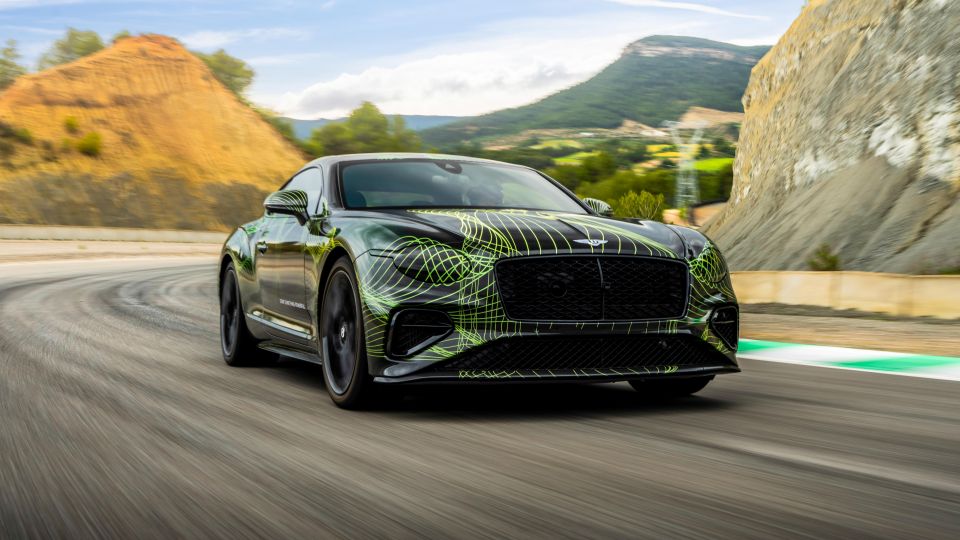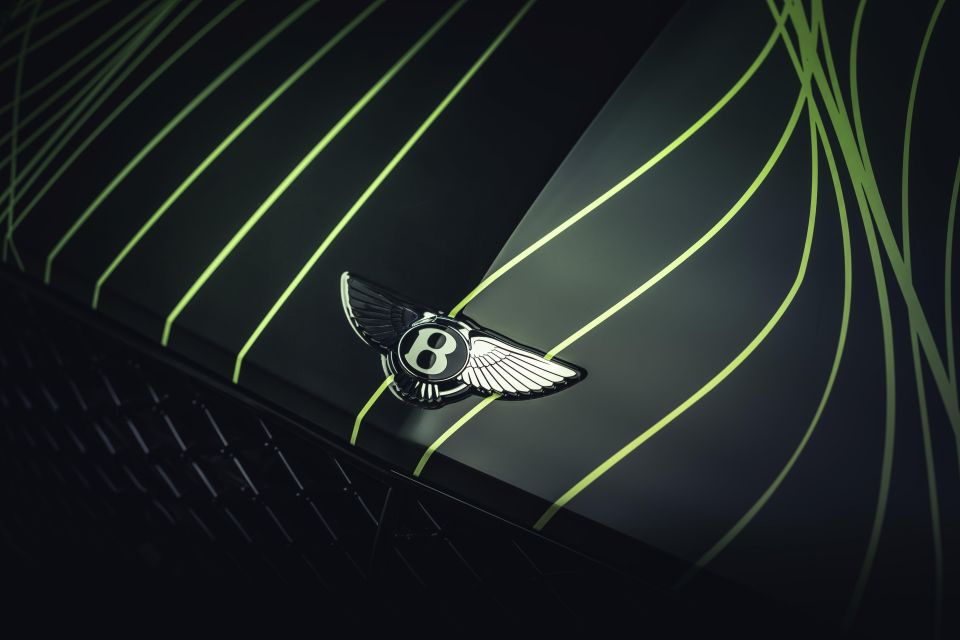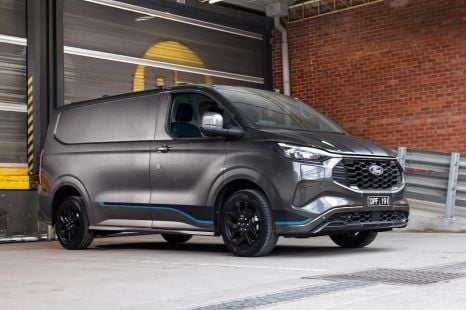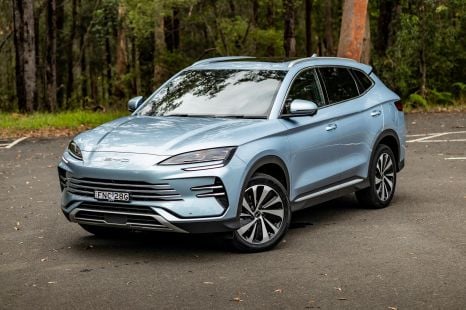

Damion Smy
2026 KGM Musso ute images leaked
2 Hours Ago
There's a new torque king in town, but does the added weight of a plug-in hybrid ruin the Bentley experience?



Founder

Founder


Founder

Founder
Where expert car reviews meet expert car buying – CarExpert gives you trusted advice, personalised service and real savings on your next new car.
One of my favourite things about the Bentley Continental has always been the bravery of sticking a 12-cylinder engine under the bonnet – even more so, keeping that in production all the way up until this year.
It was brave and it paid dividends, with around 100,000 Continentals sold since its inception over 20 years ago.
So you can imagine the collective gasps in the room when Bentley said it was ditching the W12 for a plug-in hybrid.
We wanted to find out whether the replacement could live up to the hype and substance of the outgoing 12-cylinder beast that once was, so we joined Bentley at a top secret testing event in Spain ahead of the car’s launch.
There are two primary pieces of content that’ll come from this event.

The first is a drive of the car on track, along with high level details of the drivetrain and all of this will be with a camouflaged car.
The second is a closer look at the design changes and the interior, this piece of content will be with a uncamouflaged set of cars.
While the camouflage hides most of the detail, it’s hard to not notice the changes to the headlights and tail lights. Both have grown to give the Continental a bit more character out of the road, and to signify that it’s a new model.
It’s beneath the skin where most of the changes have happened though.

Bentley ditched the W12 engine and replaced it with a turbocharged V8 hybrid arrangement. It now uses a 4.0-litre twin-turbocharged V8 with a flat-plane crank mated to an electric motor and 26.5kWh battery.
This drivetrain sends torque through an eight-speed dual-clutch transmission and an all-wheel drive system.
The electric components alone allow for around 80km of driving range on the WLTP cycle, while additional functions like four-wheel steering, a limited-slip differential, torque vectoring and a 48V electrical system improve performance.
Performance figures have gone in the right direction – system power and torque are now 575kW and 1000Nm respectively. 441kW comes from the turbocharged V8 alone, while the 140kW balance is derived from the e-motor and battery system.

The 48V system also starts the engine almost imperceptibly. It’s quite remarkable how smooth they’ve been able to make the engine start sequence.
Both at low and higher speeds it’s able to switch the petrol engine on and off and on without the rumble and thump you come to expect from a regular internal combustion car, or even some hybrids.
And don’t worry – the exhaust note is not only real, but it sounds incredible. Bentley has done an amazing job at making the car sing both at low speeds and high speeds.
While weight increases – Bentley hasn’t specified the exact amount, but we think it’s up to around 200kg – brakes remain unchanged.
Bentley doesn’t expect owners to track their vehicles, but if they do decide that’s what they want from their cars, buyers can option a carbon-ceramic brake package for better heat dissipation.
Our experience behind the wheel of the new Bentley Continental GT Speed was only brief, but it gave us a good chance to run through the drive modes on offer and then also have a go at a faster lap to evaluate whether the extra weight will come at the cost of handling.

First up we were in Bentley mode – it sets off gently and quietly with the internal combustion engine switched off. Anything up to 75 per cent throttle will keep the car in electric mode while there is sufficient charge.
The driver can then switch to Hybrid mode, which allows the engine to fire up as required but it will predominantly try and keep the engine off while there is charge in the battery.
This mode was pretty seamless and worked as you’d expect. You do notice gear shifts at lower speeds – this tends to be the case with hybrids that don’t use a CVT – but they weren’t overly aggressive or annoying like they can be in some cars.
What surprised me most was how well the electric components fill the torque gap before the turbochargers come on boost. The e-motor can blend torque delivery seamlessly until the petrol engine is ready to deliver full force.

But it was in Sport mode that things really started to heat up. In this mode the engine is permanently on and it’s delivering the full quoted power and torque outputs from the petrol and electric power sources.
Even when the battery displays as empty, there is reserve left for full acceleration. A portion of the battery is always charged or being charged while low for the very purpose of still being able to offer that surge of torque.
The Parcmotor Castelloli track is located around 45 minutes out of Barcelona, and features some pretty epic elevation changes and complements a long-legged car like this. It has big straights and lots of room to explore the car’s limits.
One particular section after turn one goes uphill for quite some distance. From behind the wheel it feels like a flat road surface – that’s how impressive the Continental’s 1000Nm of torque is in full flight. It’s the electric components working in unison with a big old turbocharged V8 to keep things humming along.

The faster sweepers also demonstrated how much effort has been put into chassis tune. The dual-chamber suspension setup has allowed Bentley to more precisely tune ride comfort, compression and rebound.
It means the Continental can sit fairly flat through corners, and feels far more nimble and agile than its kerb weight would suggest.
Even under heavy brakes into a corner with corrugations leading into it, the body remained settled and composed.
There’s no escaping the mass at the absolute limit – it’s a heavy vehicle and you will notice that at low speeds pushing through tight corners, but despite its mass it feels more nimble and agile than the previous-generation Continental.

Part of that nimbleness is thanks to adjustments in weight distribution. The V8 is shorter than the W12, so the weight was pushed back further in the engine bay, while the battery pack helps settle the rear end.
There’s also a more lively ESC Sport mode now as well. It was quite hard previously to provoke a Continental into a slide, but the new car will step out with much more enthusiasm, while still being curbed by the stability control – it lets you have plenty of fun before it really needs to step in.
Needless to say, this vehicle will set a new benchmark for the ultra-luxe GT segment.

It delivers the best of both worlds; comfortable touring with the option of engine off silence, or you can go all out in attack mode and carve up your favourite mountain pass – it feels like a jack of all trades.
We’ll reserve proper judgement for when we can test the vehicle back home at the proving ground, but early signs are that this new electrified drivetrain is a winner.
It’s also likely to make its way into other Bentley and Volkswagen Group products, which is also a pretty damn exciting prospect.

Click the images for the full gallery
MORE: Buy a Bentley Continental GT MORE: Everything Bentley Continental GT
Where expert car reviews meet expert car buying – CarExpert gives you trusted advice, personalised service and real savings on your next new car.
Paul Maric is a CarExpert co-founder and YouTube host, combining engineering expertise with two decades in automotive journalism.


Damion Smy
2 Hours Ago


Damion Smy
3 Hours Ago


Damion Smy
3 Hours Ago


Damion Smy
4 Hours Ago


Josh Nevett
4 Hours Ago


Max Davies
5 Hours Ago